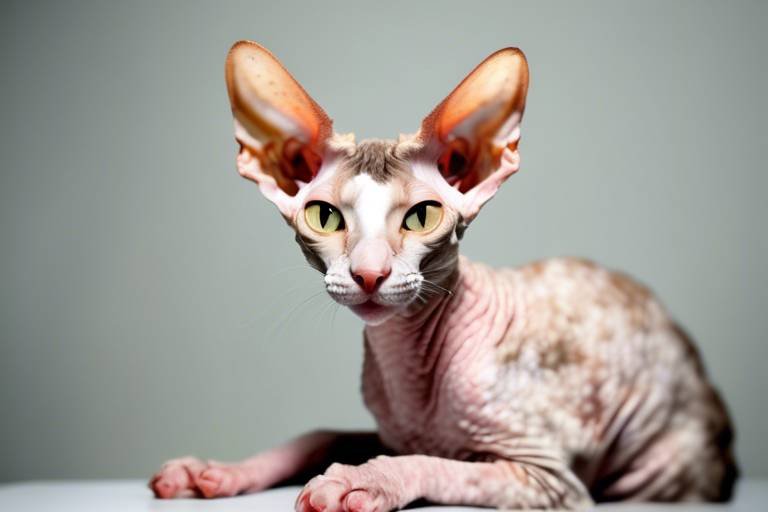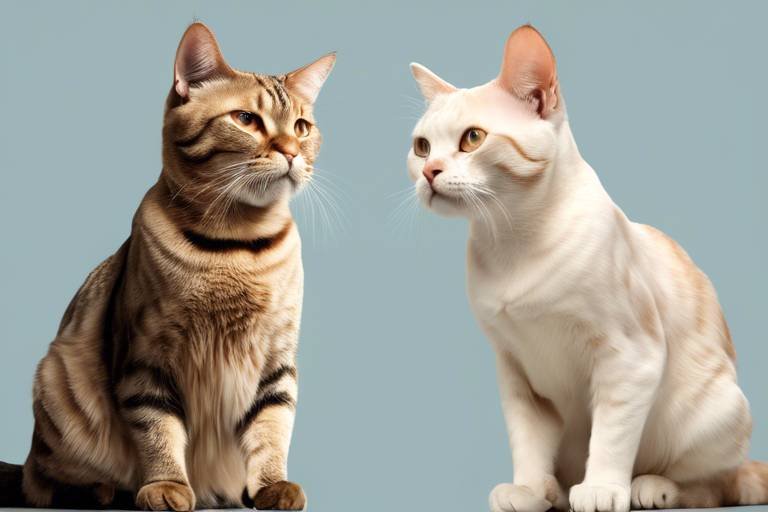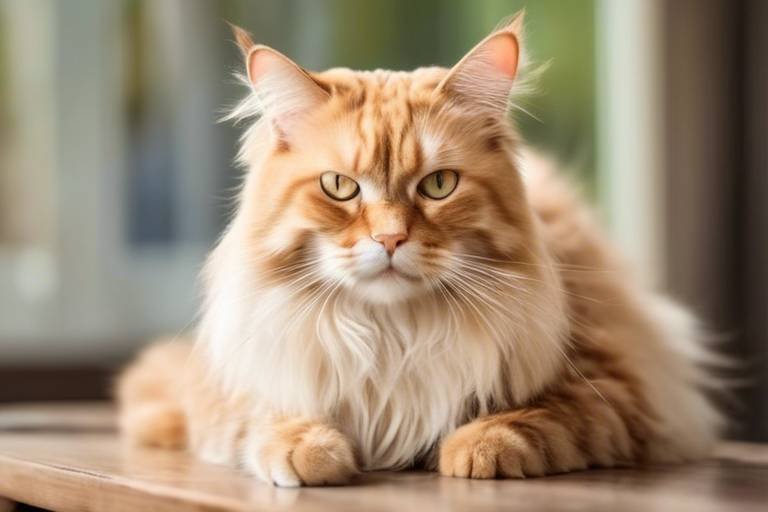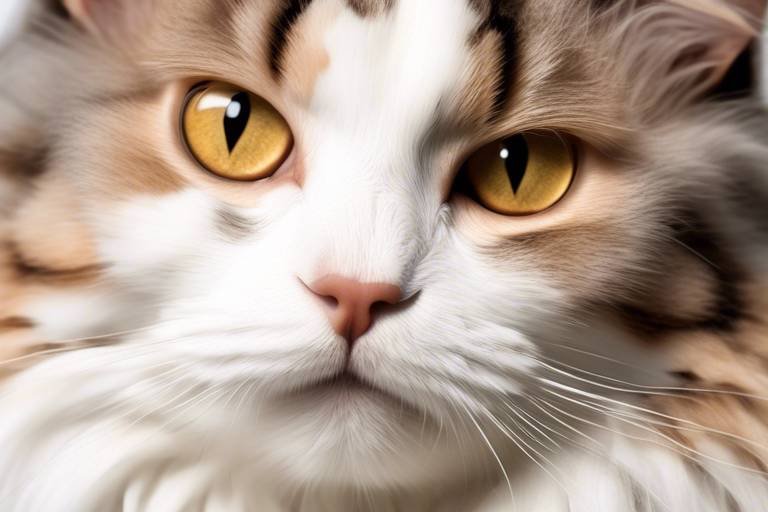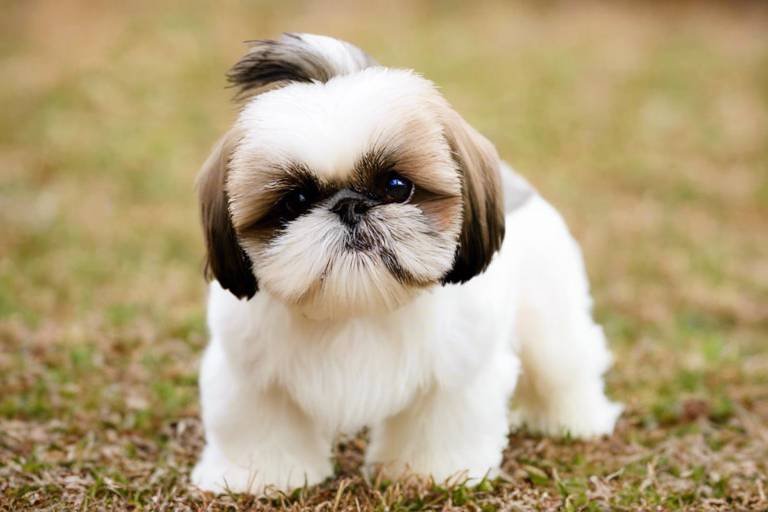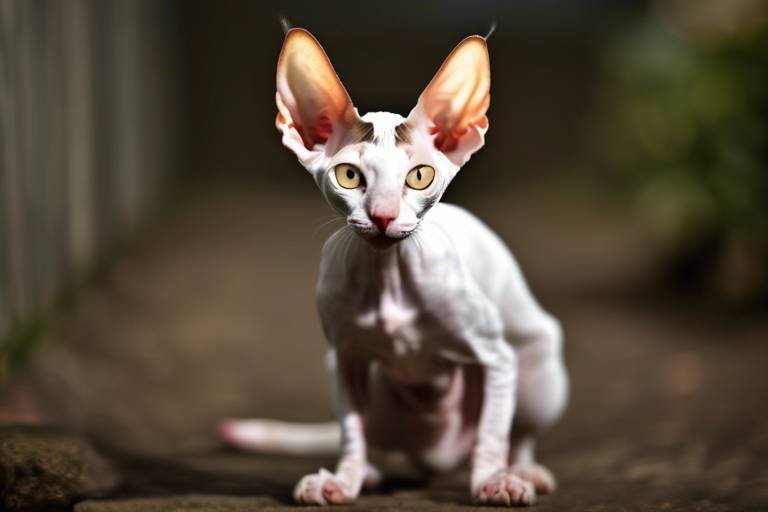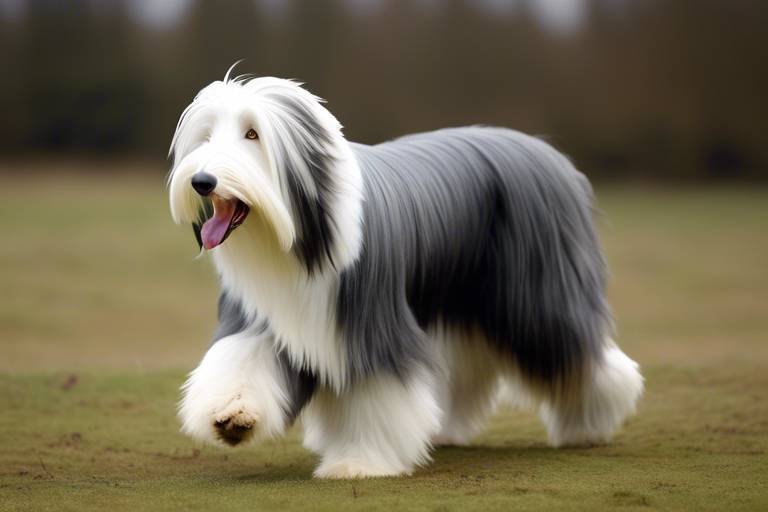The Gentle Nature of the Himalayan Cat
The Himalayan cat, often affectionately called the "Himalayan," is a breed that embodies elegance and grace. With their striking blue eyes and long, luxurious fur, these felines are not just a feast for the eyes, but also possess a gentle temperament that makes them a favorite among cat lovers. If you're thinking about welcoming a Himalayan into your home, you're in for a treat! These cats are known for their calm and affectionate nature, making them ideal companions for families as well as individuals. In this article, we will explore the unique characteristics of the Himalayan cat, focusing on their temperament, grooming needs, health considerations, and the special bond they form with their owners.
Himalayan cats are renowned for their calm and gentle demeanor, which sets them apart from many other breeds. They tend to be affectionate and enjoy spending time with their human companions, often following them around the house like a shadow. Their laid-back attitude makes them well-suited for various living environments, whether you live in a bustling family home or a quiet apartment. However, don’t mistake their serene nature for a lack of personality! These cats can be quite playful and curious, often engaging in bursts of energy that will leave you chuckling at their antics.
Socially, Himalayans are typically friendly and get along well with other pets, making them an excellent choice for multi-pet households. They thrive on companionship and are known to be affectionate lap cats. If you’re looking for a feline friend who will curl up next to you while you read a book or binge-watch your favorite series, a Himalayan is a perfect fit. Their gentle purring and soft nuzzles can turn a mundane evening into a cozy, heartwarming experience.
Now, let’s talk about grooming! With their stunning long fur, Himalayans require regular grooming to keep their coat looking its best. It's not just about aesthetics; proper grooming is essential for their skin health and overall well-being. Regular brushing helps to prevent mats and tangles, which can be a real challenge if left unattended. So, how do you keep your Himalayan looking fabulous? Let’s dive into some essential grooming techniques.
When it comes to brushing a Himalayan cat, the right tools can make all the difference. A wide-toothed comb and a slicker brush are your best friends in this endeavor. Start by gently detangling any knots, being careful around sensitive areas like the belly and behind the ears. The goal is to make grooming a pleasant experience for both you and your cat. Consistency is key! Aim to brush your Himalayan at least two to three times a week, and you’ll find that maintaining their coat becomes a breeze.
Understanding how often to groom your Himalayan cat is crucial for preventing matting and skin issues. Here’s a simple guideline:
| Grooming Frequency | Recommended Actions |
|---|---|
| Daily | For cats with very thick coats or during shedding season. |
| 2-3 times a week | For regular maintenance of healthy fur. |
| Weekly | For cats who are less prone to matting. |
Bathing your Himalayan cat can be a bit of a challenge, but it doesn’t have to be a nightmare! Here are a few tips to make bath time easier:
- Start Early: If you can, introduce your kitten to water early on to help them get used to the process.
- Use Lukewarm Water: Cats are sensitive to temperature, so make sure the water is comfortable.
- Gentle Shampoo: Use a cat-specific shampoo that’s gentle on their skin and fur.
- Drying: After the bath, gently towel dry your cat and consider using a low-heat blow dryer, keeping it at a safe distance.
Himalayans do shed seasonally, and while it might seem daunting, with proper care, you can manage the shedding effectively. Regular brushing not only helps to reduce loose hair but also keeps their coat healthy and shiny. Additionally, maintaining a well-balanced diet rich in omega fatty acids can contribute to a healthy coat and minimize shedding.
Like any breed, Himalayan cats are prone to specific health issues. Understanding these concerns is essential for providing the best care possible. Regular veterinary check-ups are crucial for early detection and prevention of health problems.
Some common health issues that affect Himalayans include:
- Respiratory Problems: Due to their brachycephalic (short-nosed) structure.
- Dental Issues: Prone to dental disease, so regular dental check-ups are vital.
- Kidney Disease: A concern in older Himalayans, requiring regular monitoring.
Preventive care is essential for maintaining your Himalayan's health. A well-rounded approach includes:
- Regular Vaccinations: Keep your cat’s vaccinations up to date.
- Balanced Diet: Feed them high-quality cat food tailored to their age and health needs.
- Health Screenings: Schedule regular vet visits to catch any issues early.
Q: How often should I groom my Himalayan cat?
A: Aim to groom your Himalayan cat at least 2-3 times a week to maintain their beautiful coat and prevent matting.
Q: Are Himalayans good with children?
A: Yes! Himalayans are generally gentle and affectionate, making them great companions for children.
Q: Do Himalayans require special diets?
A: While they don’t require a special diet, a balanced, high-quality cat food is essential for their overall health.
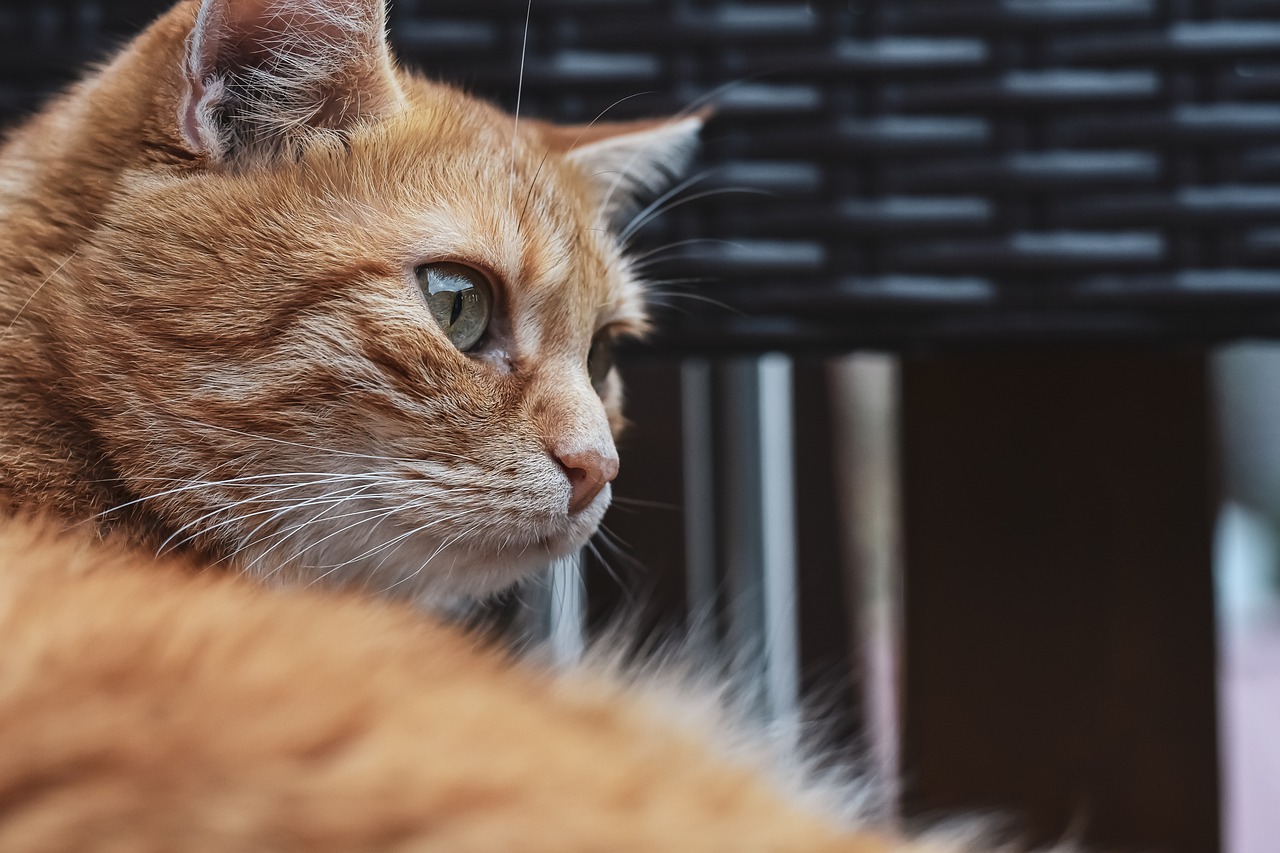
Understanding the Himalayan Cat's Temperament
This article explores the unique characteristics of the Himalayan cat, focusing on their temperament, care needs, and the special bond they form with their owners.
When you think of a Himalayan cat, what comes to mind? Perhaps you envision a fluffy ball of fur with striking blue eyes, lounging in a sunbeam. But beyond their stunning appearance lies a personality that is just as captivating. These cats are renowned for their calm and gentle demeanor, making them ideal companions for families and individuals alike. Their temperament can be described as affectionate, playful, and a bit reserved, which adds to their charm.
Himalayans are not the type of cats that will zoom around the house like a whirlwind. Instead, they prefer a more laid-back lifestyle. They enjoy lounging around, soaking up attention from their humans, and engaging in gentle play. You might find them curled up next to you on the couch, purring softly as they enjoy your company. Their social behavior is generally friendly, and they tend to get along well with other pets, although they can be a bit shy when meeting new people.
One of the most endearing traits of the Himalayan cat is their bonding nature. They thrive on companionship and often form strong attachments to their owners. This loyalty is not just about being near you; it’s about sharing in your daily life. Whether you’re working from home or relaxing on a weekend, your Himalayan will likely be by your side, offering comfort and warmth. It's almost as if they have an innate understanding of when you need a little extra love.
However, it’s important to note that while Himalayans are affectionate, they can also be quite independent. They appreciate their personal space and may retreat to a quiet corner when they need a break from the hustle and bustle of family life. This balance between affection and independence makes them unique and allows them to adapt to various living situations.
In terms of communication, Himalayans are not overly vocal, but they do have their ways of expressing themselves. You might hear a soft meow or chirp when they want your attention, or they might simply nuzzle against you to let you know they’re there. Their subtle ways of communicating can sometimes feel like a secret language shared only between you and your feline friend.
To summarize, the temperament of the Himalayan cat can be characterized by the following traits:
- Affectionate: They love to cuddle and be close to their humans.
- Calm: They prefer a serene environment and are not overly energetic.
- Playful: They enjoy gentle playtime but are not hyperactive.
- Independent: They appreciate their alone time and personal space.
- Social: They generally get along well with other pets and family members.
In conclusion, the Himalayan cat’s temperament is a delightful blend of affection, calmness, and a touch of independence. They are perfect for those looking for a loving companion that thrives on connection yet respects personal boundaries. If you’re considering bringing one of these gentle souls into your home, prepare for a relationship filled with warmth, comfort, and a unique bond that will enrich your life.
Here are some common questions people have about Himalayan cats:
- Are Himalayan cats good with children? Yes, they are generally gentle and patient, making them suitable for families.
- How much grooming do they require? Regular grooming is essential due to their long fur, and it’s best to brush them several times a week.
- Do they have any specific health issues? Yes, Himalayans can be prone to certain genetic health problems, so regular vet check-ups are important.
- What is their lifespan? On average, Himalayan cats live between 12 to 15 years, but with proper care, they can live longer.

Grooming Requirements for Himalayans
The Himalayan cat is a stunning breed, known for its long, luxurious coat that requires consistent grooming to maintain its beauty and health. If you’re a proud owner of a Himalayan, you already know that their fur is not just a fashion statement; it’s a responsibility! These cats are not only gorgeous; they also have specific grooming requirements that you need to stay on top of to keep them looking and feeling their best.
First off, let’s talk about the importance of regular grooming. Imagine having a beautiful, flowing mane that gets tangled and matted if you don’t take care of it. That’s exactly what happens with a Himalayan's fur. Their coat can easily become a tangled mess if neglected, leading to discomfort and skin issues for your furry friend. To avoid this, you’ll want to establish a grooming routine that works for both you and your cat.
When it comes to grooming tools, having the right equipment is crucial. A slicker brush and a wide-toothed comb are your best friends in this endeavor. The slicker brush helps remove loose hair and detangles any knots, while the comb can help you navigate through the undercoat. Using these tools in tandem will not only keep your cat’s coat healthy but also give you a chance to bond with them during grooming sessions. Just think of it as a spa day for your kitty!
Now, let’s dive into some effective brushing techniques. Start by gently brushing your Himalayan's coat in the direction of hair growth. This will help prevent any discomfort and make the process more enjoyable for both of you. Be sure to pay extra attention to areas that are prone to matting, such as behind the ears and under the legs. If you encounter a particularly stubborn knot, don’t yank at it! Instead, use your fingers to gently separate the strands or apply a bit of cat-safe detangling spray to ease the process. Think of it as a gentle dance rather than a wrestling match.
So, how often should you groom your Himalayan? Ideally, you should aim for at least two to three times a week. This frequency will help prevent matting and keep their coat looking pristine. However, during shedding season, which typically occurs in spring and fall, you may want to increase grooming sessions to daily. It’s like spring cleaning for your cat—necessary and rewarding! By keeping up with this schedule, you’ll not only maintain their coat but also keep an eye out for any skin issues or parasites that may be hiding beneath that beautiful fur.
Bathing your Himalayan can feel like a daunting task, but it doesn’t have to be! While most cats are not fond of water, there are ways to make bath time less stressful. First, choose a quiet time when your cat is calm and relaxed. Use lukewarm water and a gentle, cat-specific shampoo to avoid irritating their skin. It can be helpful to have a non-slip mat in the tub to prevent any accidents. Also, keep a towel handy to wrap them up right after the bath to keep them warm and cozy. Remember, the goal is to make this experience as pleasant as possible, so shower them with love and treats during and after the bath!
Lastly, let’s address the elephant in the room: shedding. Yes, Himalayans shed, and it can be quite noticeable, especially during seasonal changes. However, with proper care, you can manage the shedding effectively. Regular brushing not only helps minimize loose fur but also reduces the amount of hair that ends up on your furniture and clothes. A good vacuum cleaner designed for pet hair can also be a lifesaver for keeping your home fur-free. Think of it as a team effort between you and your cat to maintain a clean living environment!
In summary, grooming your Himalayan cat is not just about aesthetics; it's about ensuring their comfort and health. By establishing a routine, using the right tools, and incorporating regular brushing and bathing into your schedule, you’ll create a bond that goes beyond just pet ownership. You’ll be nurturing a relationship built on trust and love, making your Himalayan not just a pet, but a cherished member of your family.
- How often should I groom my Himalayan cat? Aim for at least 2-3 times a week, increasing to daily during shedding seasons.
- What tools do I need for grooming? A slicker brush, a wide-toothed comb, and cat-safe detangling spray are essential.
- How can I make bath time easier? Use lukewarm water, a gentle shampoo, and keep a towel handy for after the bath.
- What should I do if my cat has a knot in their fur? Gently use your fingers to separate the strands or apply a cat-safe detangling spray.
Brushing Techniques
When it comes to keeping your Himalayan cat looking fabulous, play a crucial role. These cats are famous for their stunning, long fur, which can easily become matted if not cared for properly. But don't worry! With the right tools and a bit of know-how, you can make grooming a breeze for both you and your furry friend.
First and foremost, investing in the right grooming tools is essential. A high-quality wide-toothed comb is your best friend for detangling those lovely locks. Start by gently working through any knots or tangles, beginning at the tips of the fur and gradually moving up to the roots. This technique minimizes discomfort for your cat and reduces the chances of breaking their delicate hair.
In addition to a comb, a bristle brush is fantastic for smoothing out the coat and adding a bit of shine. You can use this brush after combing to remove any loose hair and to distribute natural oils throughout the fur, which keeps it healthy and vibrant. Now, you might be wondering, “How often should I brush my Himalayan?” Well, the answer largely depends on the individual cat, but a good rule of thumb is to brush them at least 2-3 times a week. For those with particularly thick or long fur, you might want to step it up to every day, especially during shedding seasons.
During grooming sessions, it's important to create a calm environment. Choose a quiet space where your cat feels safe and comfortable. You can even make it a bonding experience by offering treats or gentle praises throughout the process. Remember, patience is key! If your Himalayan seems a bit anxious or restless, take a break and try again later. The goal is to make grooming a positive experience, not a chore.
Lastly, don’t forget to check for any skin issues or parasites while grooming. Regular brushing not only keeps your cat’s coat looking beautiful but also allows you to monitor their skin for any unusual bumps or irritations. If you notice anything out of the ordinary, be sure to consult your veterinarian.
In summary, brushing your Himalayan cat is not just about maintaining their gorgeous appearance; it’s also about ensuring their overall health and happiness. With the right techniques and tools, you can turn grooming into a delightful ritual that strengthens the bond between you and your feline companion.
- How often should I brush my Himalayan cat? Aim for at least 2-3 times a week, or daily during shedding seasons.
- What tools do I need for grooming? A wide-toothed comb and a bristle brush are essential for maintaining their coat.
- How can I make grooming more enjoyable for my cat? Create a calm environment, use treats, and be patient during the process.
- What should I do if I find mats in my cat's fur? Use a wide-toothed comb to gently work through the mats, starting at the tips.
Frequency of Grooming
When it comes to grooming your Himalayan cat, consistency is key. These beautiful felines have a stunning coat that requires regular attention to stay healthy and tangle-free. Ideally, you should aim to groom your Himalayan at least two to three times a week. This frequency not only helps in preventing matting but also allows you to keep an eye on their skin and overall health.
Imagine this: you’re enjoying a cozy evening on the couch, your Himalayan cat curled up next to you. With each gentle brush stroke, you’re not just maintaining their luxurious fur; you’re also building a bond. Grooming becomes a shared experience—one that fosters trust and affection between you and your furry friend. However, during shedding seasons, typically in spring and fall, you might find yourself needing to groom them daily to manage the extra fluff. This is when their undercoat is released, and it can turn your home into a fur wonderland if not handled promptly!
To help you keep track of your grooming routine, consider creating a simple schedule. Here’s a quick table that outlines a recommended grooming frequency:
| Season | Recommended Grooming Frequency |
|---|---|
| Winter | 2-3 times a week |
| Spring | Daily |
| Summer | 2-3 times a week |
| Fall | Daily |
By adhering to this schedule, you can help ensure that your Himalayan cat remains comfortable and their coat stays in prime condition. Remember, grooming is not just about aesthetics; it’s also about maintaining their overall health. Regular grooming sessions allow you to check for any unusual lumps, bumps, or skin irritations that might need attention. So, grab your brush, set aside some time, and enjoy those grooming sessions—they're more than just a chore; they're a chance to connect with your beloved pet!
- How often should I groom my Himalayan cat? Aim for 2-3 times a week, increasing to daily during shedding seasons.
- What tools do I need for grooming? A slicker brush, wide-toothed comb, and a dematting tool are essential.
- Can I bathe my Himalayan cat? Yes, but only when necessary. Regular brushing should minimize the need for baths.
- How can I reduce shedding? Regular grooming and a balanced diet can help manage shedding effectively.
Bathing Tips
Bathing your Himalayan cat can feel like preparing for a delicate dance; it requires patience, understanding, and a sprinkle of creativity. These fluffy companions may not be the biggest fans of water, but with the right approach, you can turn bath time into a more pleasant experience for both of you. First and foremost, always use a cat-specific shampoo. Human shampoos can be too harsh for their sensitive skin, leading to irritation. Look for a gentle, hypoallergenic formula that will cleanse without stripping their coat of its natural oils.
Before you even think of running the water, it’s a good idea to get your kitty comfortable with the bathing area. Set up the scene with a non-slip mat in the tub or sink to prevent any slips. You wouldn’t want your furry friend to feel like they’re on a roller coaster ride! Once your cat is in the bathing area, fill it with just a few inches of lukewarm water. Too much water can be overwhelming, and too cold or hot can be downright torturous. Remember, you’re aiming for a spa-like experience, not a water park adventure!
When it’s time to wash, gently wet your cat’s fur using a cup or a handheld showerhead, avoiding their face. This is where you can really shine with your technique! Use your hands to lather the shampoo into their fur, taking care to work it through their thick coat. A soft sponge can also be a handy tool here. And here’s a little tip: keep a towel nearby. Once you’re done rinsing, wrap your Himalayan in the towel to avoid a wet cat sprint around your home!
After bath time, it’s essential to dry your Himalayan properly. Some cats may tolerate a blow dryer, but if yours is averse to noise, stick with towel drying and let them air dry in a warm, draft-free room. Don’t forget to reward your feline friend with some treats and cuddles afterward! This positive reinforcement will help them associate bath time with good experiences, making future baths less of a hassle.
In summary, bathing your Himalayan cat doesn’t have to be a daunting task. With the right preparations and techniques, you can make it a more enjoyable routine. Remember to keep everything calm, use the right products, and most importantly, shower your kitty with love throughout the process!
- How often should I bathe my Himalayan cat? Generally, bathing your Himalayan cat every 4-6 weeks is sufficient, but individual needs may vary based on their activity level and grooming routine.
- What if my cat hates water? If your cat is particularly water-averse, consider using dry shampoo or grooming wipes as an alternative to bathing.
- Can I use human shampoo on my cat? No, human shampoos can irritate your cat's skin. Always use a shampoo specifically formulated for cats.
- Is it necessary to bathe my Himalayan cat? Bathing is not strictly necessary if you maintain a regular grooming routine, but it can help keep their coat clean and free from oils and dirt.
Dealing with Shedding
Ah, the beauty of a Himalayan cat! With their stunning long fur and captivating blue eyes, they truly are a sight to behold. However, one of the challenges that come with owning such a magnificent creature is managing their shedding. As the seasons change, you may notice an increase in fur around your home. But don't worry! Dealing with shedding can be manageable with the right approach and a bit of understanding.
First, it’s essential to recognize that Himalayan cats typically shed more during the spring and fall. During these times, their bodies are adjusting to the changing temperatures, leading to a natural shedding of their undercoat. To help keep your home fur-free, consider implementing a few strategies:
- Regular Grooming: Make grooming a routine. Brushing your Himalayan at least 2-3 times a week can significantly reduce the amount of loose fur in your home. Not only does this help with shedding, but it also keeps their coat healthy and shiny.
- Quality Grooming Tools: Invest in high-quality grooming tools, such as a slicker brush and a comb designed for long-haired cats. These tools are effective in removing loose fur and preventing mats.
- Healthy Diet: A balanced diet rich in Omega-3 and Omega-6 fatty acids can promote a healthy coat, reducing excessive shedding. Consult your vet for recommendations on the best food for your Himalayan.
In addition to these tips, creating a designated grooming space can make the process more enjoyable for both you and your cat. Choose a quiet area with good lighting, and perhaps place a cozy blanket or bed where your Himalayan can feel relaxed during grooming sessions. This not only helps in minimizing shedding but also strengthens the bond between you and your feline friend.
Another effective way to manage shedding is to maintain a clean home environment. Regular vacuuming and using lint rollers can help keep your space fur-free. Additionally, consider using air purifiers equipped with HEPA filters to capture pet dander and fur floating in the air. This can be particularly beneficial for allergy sufferers in the household.
Lastly, don't forget about the importance of hydration. Ensuring your Himalayan has access to fresh water can help keep their skin hydrated, potentially reducing shedding. Cats can be notoriously picky about their water, so consider investing in a cat water fountain, which encourages them to drink more.
By understanding the shedding cycle of your Himalayan and adopting these proactive measures, you can enjoy the beauty of your fluffy companion without the constant battle against fur. Remember, shedding is a natural part of being a cat owner, but with the right strategies, you can keep it under control and maintain a harmonious living space.
Q: How often should I groom my Himalayan cat to manage shedding?
A: It's recommended to groom your Himalayan cat at least 2-3 times a week, especially during shedding seasons.
Q: What tools are best for grooming a Himalayan cat?
A: A slicker brush and a wide-toothed comb are ideal for removing loose fur and preventing mats in their long coat.
Q: Can diet affect shedding in Himalayan cats?
A: Yes! A diet rich in Omega-3 and Omega-6 fatty acids can promote a healthy coat and potentially reduce excessive shedding.
Q: How can I reduce allergens in my home from cat fur?
A: Regular vacuuming, using lint rollers, and employing air purifiers with HEPA filters can significantly reduce allergens and fur in your home.
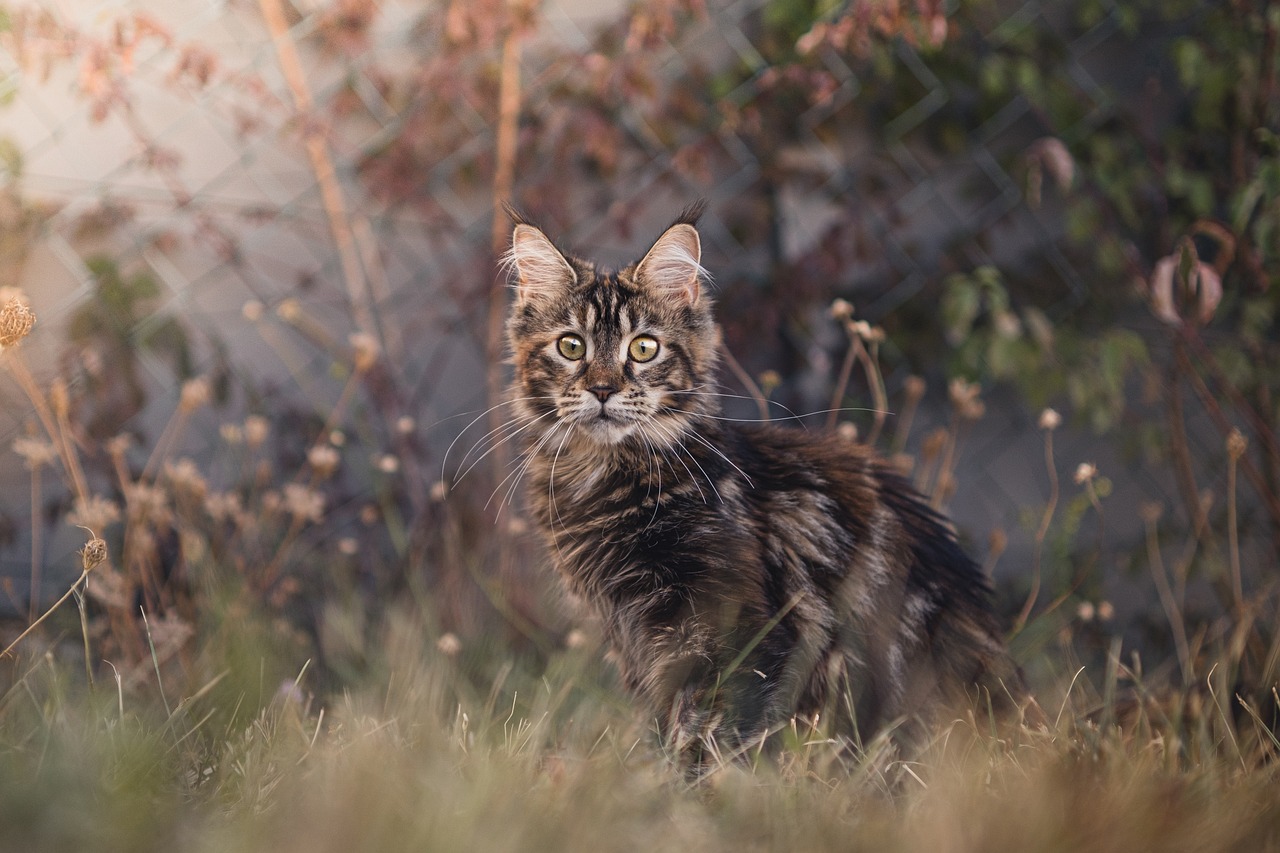
Health Considerations for Himalayan Cats
When it comes to our beloved furry friends, understanding their health needs is paramount, especially for Himalayan cats. These enchanting creatures, with their stunning blue eyes and silky coats, are not just beautiful; they also come with their own set of health considerations. As a responsible pet owner, it’s crucial to be aware of the common health issues that can affect Himalayans so you can provide the best care possible. Regular veterinary check-ups are essential to catch any potential problems early and keep your feline companion thriving.
One of the most notable health concerns for Himalayan cats is their predisposition to respiratory issues. This is largely due to their brachycephalic (short-nosed) facial structure. Owners should be vigilant for signs of difficulty breathing, such as wheezing or excessive panting. It’s important to ensure that your Himalayan is in a comfortable environment, especially during hot weather, as they can struggle to regulate their body temperature.
Moreover, Himalayans are also prone to certain genetic conditions, including polycystic kidney disease (PKD) and dental issues. PKD can lead to kidney failure, which is a serious concern, while dental problems can cause pain and affect their ability to eat properly. Regular vet visits should include dental check-ups to ensure their teeth and gums are healthy.
To help you better understand the health considerations for your Himalayan cat, here’s a quick overview of some common health issues:
| Health Issue | Description | Preventive Measures |
|---|---|---|
| Respiratory Issues | Difficulty breathing due to brachycephalic structure. | Avoid heat exposure, maintain a cool environment. |
| Polycystic Kidney Disease (PKD) | Genetic condition leading to kidney failure. | Regular veterinary check-ups, genetic testing. |
| Dental Problems | Gum disease and tooth decay. | Regular dental cleanings, proper oral hygiene. |
Another important aspect of maintaining your Himalayan’s health is preventive care. This includes ensuring they are up to date on vaccinations, which protect them from various diseases. Additionally, a balanced diet plays a crucial role in their overall well-being. High-quality cat food that meets their nutritional needs will keep them healthy and energetic. It’s also wise to monitor their weight, as obesity can lead to a host of other health issues.
Regular health screenings are also vital. These check-ups can help identify any underlying health problems before they become serious. Your veterinarian can recommend a schedule based on your cat’s age and health status. Generally, annual check-ups are recommended for younger cats, while older cats may require more frequent visits.
In conclusion, the health of your Himalayan cat should always be a top priority. By being aware of common health issues and following a preventive care routine, you can ensure that your feline friend lives a long, happy, and healthy life. Remember, a little vigilance goes a long way in keeping your Himalayan purring happily!
- What are the most common health issues in Himalayan cats?
Himalayan cats are prone to respiratory issues, polycystic kidney disease, and dental problems. - How often should I take my Himalayan cat to the vet?
Annual check-ups are recommended, but older cats may need to visit more frequently. - What kind of diet is best for Himalayan cats?
A high-quality, balanced diet that meets their nutritional needs is essential for their health. - Can I prevent health issues in my Himalayan cat?
Yes, regular veterinary visits, a proper diet, and preventive care can help maintain their health.
Common Health Issues
When it comes to our beloved Himalayan cats, understanding their health is just as crucial as appreciating their stunning looks and gentle personalities. These cats, with their striking blue eyes and fluffy coats, can unfortunately be prone to a variety of health issues that every owner should be aware of. One of the most common concerns is respiratory problems, due to their brachycephalic (flat-faced) structure. This can lead to breathing difficulties, especially in hot or humid weather. Imagine trying to breathe through a straw; that’s how your Himalayan might feel!
Another significant health issue is kidney disease. Himalayans are at a higher risk for conditions like chronic kidney disease, which can be insidious and often goes unnoticed until it’s advanced. Regular veterinary check-ups are essential to catch these issues early. Additionally, dental disease is a common problem in Himalayans. Their unique jaw structure can lead to misalignment of teeth, which can cause plaque buildup and gum disease. Think of it as a hidden battle happening right in their mouths!
Moreover, genetic disorders can pose a risk for this breed. Conditions such as polycystic kidney disease (PKD) and certain eye disorders like progressive retinal atrophy (PRA) can affect their quality of life. These conditions often stem from their breeding history, which can sometimes prioritize appearance over health. It’s crucial for potential owners to seek out reputable breeders who screen for these genetic issues.
To sum it up, here are some of the most common health issues faced by Himalayan cats:
- Respiratory problems
- Chronic kidney disease
- Dental disease
- Genetic disorders (e.g., PKD, PRA)
By being proactive and keeping an eye on these potential health concerns, you can help ensure that your Himalayan cat lives a long, healthy, and happy life. Regular veterinary visits, a balanced diet, and a loving home environment are key components in managing their health effectively.
Q: How often should I take my Himalayan cat to the vet?
A: It's recommended to take your Himalayan for a check-up at least once a year. However, if they show any signs of illness or discomfort, don’t hesitate to visit the vet sooner.
Q: Are Himalayans prone to any specific allergies?
A: Yes, Himalayans can be prone to certain allergies, including food and environmental allergies. If you notice excessive scratching or changes in behavior, consult your veterinarian.
Q: What can I do to prevent dental issues in my Himalayan?
A: Regular dental care is essential. Brushing their teeth, providing dental treats, and scheduling professional cleanings can help maintain their oral health.
Q: What signs should I look for that indicate my Himalayan might be unwell?
A: Watch for changes in appetite, lethargy, excessive grooming, or any unusual behavior. These could be signs of underlying health issues.
Preventive Care
When it comes to keeping your Himalayan cat healthy, preventive care is paramount. Just like us, these fluffy companions need regular check-ups to catch any potential health issues early on. Scheduling annual visits to the veterinarian can help ensure your cat remains in tip-top shape. During these visits, your vet will perform a thorough examination, checking everything from their eyes to their teeth, and even their heart. It's like a mini health assessment that can save you a lot of worry down the road!
One crucial aspect of preventive care is vaccinations. Vaccines protect your Himalayan from various diseases, some of which can be quite serious. Here’s a quick rundown of the typical vaccination schedule:
| Age | Vaccination |
|---|---|
| 6-8 weeks | Feline Distemper (FVRCP) |
| 12-16 weeks | Rabies, Feline Leukemia |
| 1 year | Booster for all previous vaccinations |
| Every 1-3 years | Booster vaccinations as recommended |
But vaccinations are just one piece of the puzzle. A balanced diet is equally essential for your Himalayan's health. These cats tend to have a more sedentary lifestyle, so feeding them high-quality cat food that is rich in protein and low in fillers can help maintain their ideal weight. Look for brands that list meat as the first ingredient and avoid those with too many artificial additives. It’s like fueling a sports car with premium gas instead of regular; you want to give them the best to keep them running smoothly!
Regular health screenings are another critical component of preventive care. These screenings can include blood tests that check for conditions such as kidney disease or diabetes, which Himalayans can be prone to. Think of it as a routine check-up for your car—better to catch any potential issues before they become big problems!
Lastly, don’t forget about dental care! Dental disease is common in cats, and Himalayans are no exception. Regularly brushing their teeth or providing dental treats can help keep their pearly whites in good shape. It’s like giving them a spa day for their mouth! You wouldn’t want to skip brushing your own teeth, right? Your cat deserves the same attention.
In summary, preventive care for your Himalayan cat involves a combination of regular veterinary visits, vaccinations, a balanced diet, health screenings, and dental hygiene. By taking these steps, you can help ensure that your feline friend enjoys a long, happy, and healthy life by your side.
- How often should I take my Himalayan cat to the vet? It’s recommended to take them for an annual check-up.
- What vaccinations do Himalayans need? They typically need FVRCP, rabies, and feline leukemia vaccines.
- How can I tell if my cat is overweight? You should be able to feel their ribs without too much pressure, and they should have a defined waist.
- Is dental care really that important? Yes! Dental disease can lead to serious health issues if not addressed.
Frequently Asked Questions
-
What is the temperament of Himalayan cats?
Himalayan cats are renowned for their gentle and calm demeanor. They tend to be affectionate and enjoy spending time with their owners, making them wonderful companions. Their sweet nature often means they get along well with children and other pets, creating a loving home environment.
-
How often should I groom my Himalayan cat?
Due to their long, luxurious fur, it’s essential to groom your Himalayan cat at least two to three times a week. This helps prevent matting and keeps their coat healthy. During shedding seasons, you might need to increase grooming frequency to manage loose fur effectively.
-
What are the best brushing techniques for Himalayans?
Using a wide-toothed comb followed by a slicker brush is recommended for Himalayans. Start by gently detangling any knots, then brush through their fur in the direction of hair growth. This method helps maintain their beautiful coat while ensuring a pleasant grooming experience for your cat.
-
Do Himalayan cats require baths?
While they are generally good at grooming themselves, occasional baths can help keep their coat clean and free of oils. Aim to bathe your Himalayan cat every few months or as needed, using a gentle cat shampoo. Make bath time enjoyable with treats and patience to reduce stress for both you and your feline friend.
-
What health issues are common in Himalayan cats?
Himalayan cats can be prone to specific health issues, such as respiratory problems due to their brachycephalic (flat-faced) structure, as well as kidney disease and dental issues. Regular veterinary check-ups are crucial for early detection and management of these conditions.
-
How can I provide preventive care for my Himalayan cat?
Preventive care includes keeping up with vaccination schedules, providing a balanced diet, and scheduling regular health screenings. Keeping an eye on their weight and dental health is also vital to ensure your Himalayan remains happy and healthy throughout their life.


